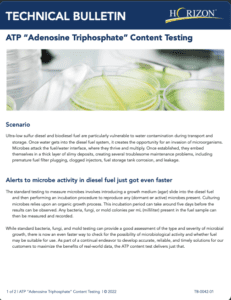Are You Certified in Oil Analysis?
Today’s oil analysis capabilities offer a great deal more than just monitoring component health. With today’s technology, along with performing the proper tests, we can:
- Monitor the condition of the oil
- See if it is suitable for continued use
- Reduce the amount of used oil disposal
- Adjust maintenance intervals
- Adjust component replacement schedules
- Improve forecasting and budgeting
- Increase component life hours
With all of this in mind, it begs the question, are you able to maximize the return on investment from your oil analysis program? I believe the answer to this question would be for you to become certified as an Oil Monitoring Analyst (OMA I) via the Society of Tribologists and Lubrication Engineers (STLE).
What is an Oil Monitoring Analyst (OMA I)?
Predictive maintenance professionals who oversee the oil analysis program for a shop/plant would be suited for OMA I certification. At POLARIS we call this person a Program Champion. At POLARIS we believe the single most important ingredient in a successful oil analysis program is the Program Champion inside it. OMA I certification might also be beneficial for other members of a maintenance team to obtain as well (i.e. mechanics, operators, engineers, etc.). Anyone with the following core responsibilities would be a viable candidate for OMA 1 certification:
- Responsible for oil sampling
- Reviews oil analysis reports and performs the correct tests
- Maintains overall care of equipment and maintenance actions
Becoming OMA I Certified
OMA I certification is obtained by scoring 70 percent or higher on the designated exam that standardizes the body of knowledge for an Oil Monitoring Analyst. Once obtained, the certification is valid for three(3) years, after which individuals are required to recertify to maintain their OMA I status.
OMA I Exam Topics
- Sampling
- Application/Test Methods
- Data Interpretation
- Troubleshooting
- Lubrication Fundamentals
Requirements
- 16 hours of training in oil analysis-related courses, which may include company training programs
- Check out our Training and Consulting Services
- One year of experience utilizing oil analysis in the field of lubrication
Society of Tribologists & Lubrication Engineers (STLE)
So what are you waiting for? Get your Oil Monitoring Analyst I (OMA I) certification today. Visit the STLE website for a list of recommended reading materials for certification.
Proven Impact. Proven Uptime. Proven Savings.
Let us prove it to you.
Published December 23, 2022










